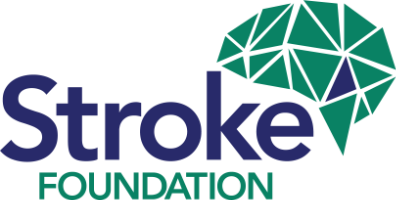Queensland must keep moving forward in stroke treatment
June 14, 2019
Stroke Foundation has welcomed the Queensland Government’s $19.2 billion budget boost to health services, in particular its focus on keeping Queenslanders healthy through chronic disease prevention.
Stroke Foundation Queensland State Manager Andrea Sanders said Queensland continued to lead the way nationally in stroke and chronic disease prevention with the My health for life program.
“I am pleased My health for life has been recognised as an important initiative and its funding has been extended for a further four years,” Ms Sanders said.
“The program delivers health checks and provides support to people at high risk of stroke, type 2 diabetes and heart disease to make healthy lifestyle changes with the guidance of a coach.
“Together with the establishment of the statutory body Health and Wellbeing Queensland, steps are in place to make a positive difference to local lives by minimising the risk of future illness.
“In turn, this helps reduce the burden on our health services and economy.”
It’s estimated there will be more than 10,000 strokes in Queensland this year and more than 90,000 stroke survivors live in the community.
Stroke attacks the brain, the human control centre, and it can change lives in an instant.
Ms Sanders said the next challenge for the State Government was to ensure those Queenslanders who do experience a stroke have every opportunity to survive it and live well.
“We know distance is a major hurdle for rural and regional Queenslanders because stroke specialists are largely based in metropolitan areas,” Ms Sanders said.
“Stroke is always a time-critical emergency. Around 1.9 million brain cells a minute are destroyed by a stroke, but this damage can be stopped with the right treatment at the right time.
“The state government’s investment in upgrading imaging equipment at a number of regional hospitals paves the way for the next advancement in stroke – a statewide stroke telemedicine network and treatment pathway.”
A telemedicine network would link hospitals to a team of neurologists via computer software remotely, allowing them to review brain scans and provide diagnosis and timely treatment advice.
“This is needed 24 hours a day, seven days a week to ensure all Queenslanders are given the best possible chance to access high quality, time critical stroke treatment which we know saves lives and improves outcomes,” Ms Sanders said.
Stroke Foundation Queensland State Manager Andrea Sanders said Queensland continued to lead the way nationally in stroke and chronic disease prevention with the My health for life program.
“I am pleased My health for life has been recognised as an important initiative and its funding has been extended for a further four years,” Ms Sanders said.
“The program delivers health checks and provides support to people at high risk of stroke, type 2 diabetes and heart disease to make healthy lifestyle changes with the guidance of a coach.
“Together with the establishment of the statutory body Health and Wellbeing Queensland, steps are in place to make a positive difference to local lives by minimising the risk of future illness.
“In turn, this helps reduce the burden on our health services and economy.”
It’s estimated there will be more than 10,000 strokes in Queensland this year and more than 90,000 stroke survivors live in the community.
Stroke attacks the brain, the human control centre, and it can change lives in an instant.
Ms Sanders said the next challenge for the State Government was to ensure those Queenslanders who do experience a stroke have every opportunity to survive it and live well.
“We know distance is a major hurdle for rural and regional Queenslanders because stroke specialists are largely based in metropolitan areas,” Ms Sanders said.
“Stroke is always a time-critical emergency. Around 1.9 million brain cells a minute are destroyed by a stroke, but this damage can be stopped with the right treatment at the right time.
“The state government’s investment in upgrading imaging equipment at a number of regional hospitals paves the way for the next advancement in stroke – a statewide stroke telemedicine network and treatment pathway.”
A telemedicine network would link hospitals to a team of neurologists via computer software remotely, allowing them to review brain scans and provide diagnosis and timely treatment advice.
“This is needed 24 hours a day, seven days a week to ensure all Queenslanders are given the best possible chance to access high quality, time critical stroke treatment which we know saves lives and improves outcomes,” Ms Sanders said.
